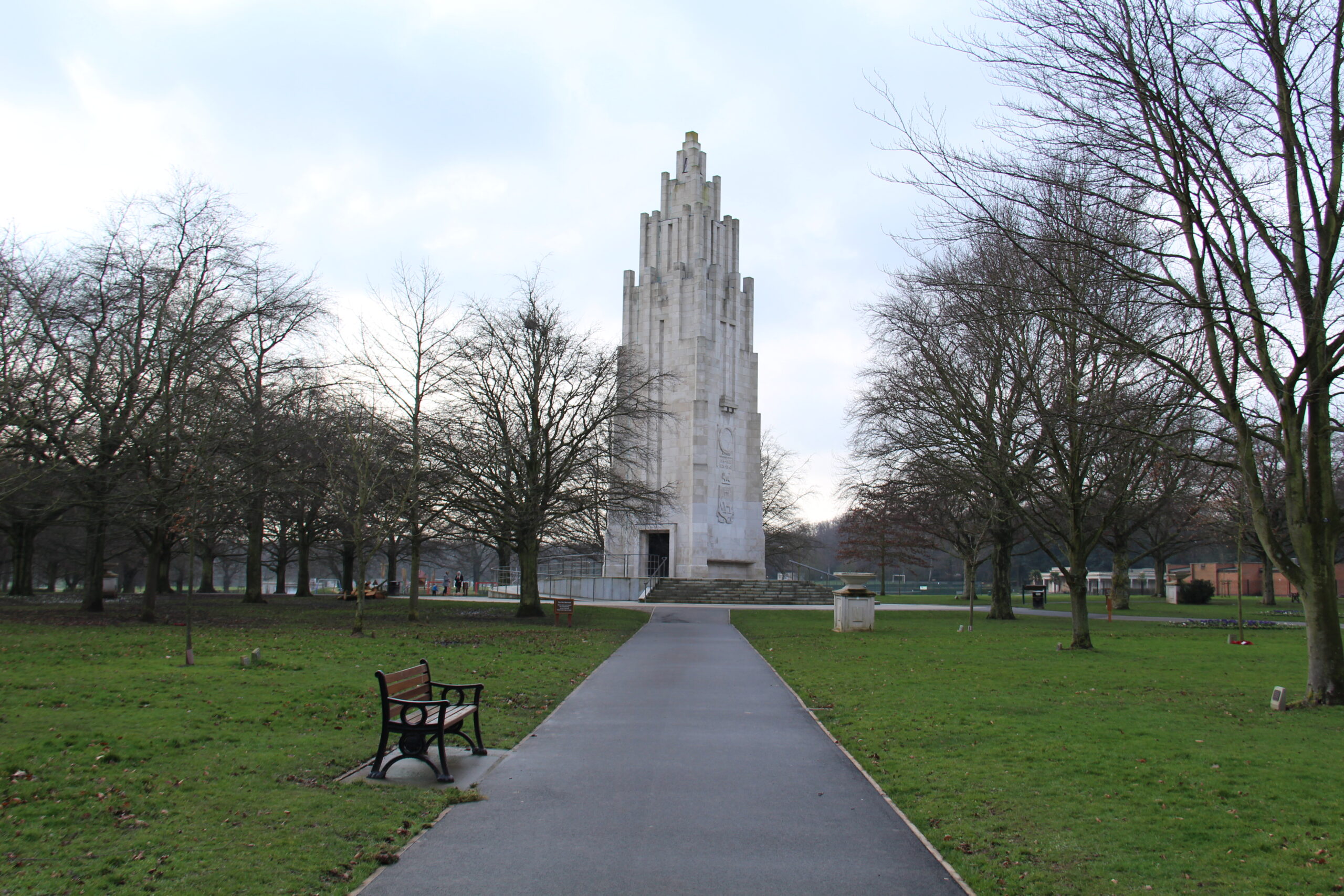As preparations continue on events to mark the centenary of Coventry’s War Memorial Park in July 2021, Peter Walters looks back at the beginnings of the park, one hundred years ago…
On 4th December 1919, the Mayor of Coventry, Councillor Joseph Innes Bates, formally launched a public subscription appeal to create a new park for the city.
Earlier in the year a Town Meeting had been convened to decide how Coventry was going to remember the 2600 men it had lost in the Great War – and the idea of a memorial park was born.
The site identified was roughly 120 acres of open farmland running alongside the old Kenilworth Road, described as a ‘well-wooded and beautiful piece of land’ close to what were already many Coventrians’ favourite country walks.
Another 62 acres of ancient woodland, known as Styvechale Common and flanking the farmland on two sides, was to be incorporated, with full public rights to it restored.
At the time, Coventry’s largest park was just 23 acres in size and its sports facilities, for a city growing rapidly in population, were woefully inadequate.
The main area of the new park would be taken up with playing fields, with space too for flower and agricultural shows and for meetings. There would be children’s playgrounds and formal gardens for older folk, and an open air bath, if funds permitted. Old cattle ponds in the fields would be turned into a rock garden.
It had not yet been decided what shape the war memorial would take, but the plan was that an old medieval track, which wandered across the farmland, would form the divide between the formal and sports areas of the park.
The owner of the land, and the manorial rights, the Hon. Alexander Frederick Gregory of nearby Styvechale Hall, agreed to give the city council first option on purchasing it for £31,000, and it was estimated that it might cost another £19,000 to fence, drain and lay out the park, taking the total cost to £50,000.
The immediate priority, however, was to raise the purchase price as Gregory’s option expired on 23rd December. He had himself pledged to return £2000 of the purchase price as a donation.
At the formal launch, the Mayor revealed that he already had pledges of more than £22,000 from just under 140 residents, out of a total population of 135,000. He declared that a War Memorial Week would run from 14th December to raise the rest of the money.
Once that had been achieved, preparations began for a grand opening ceremony, to be held on Saturday, 9th July 1921.
June 1921 had been the driest for a century and the weather was still blazing hot on opening day as the official ceremonies began with a procession from the Barracks Square out to the site, led by city councillors wearing their robes, black ties and white gloves.
The official launch, performed by the Mayor, Councillor William Henry Grant, and the Bishop of Coventry, Huyshe Yeatman-Biggs, was surprisingly perfunctory, but the festivities were on a grand scale.

It was estimated that more than 20,000 people were there to witness the opening of the new park. More than 3000 children took part in a choral concert, there was folk dancing, relay races for youngsters, a physical culture display and later, dancing to the Vauxhall Brass Band.
The park, of course, was still just farmland. The path layout was agreed with the city council the following year and in 1923 it was determined that the main entrance should be at The Grove, where the Kenilworth and Leamington Roads divided. Its ornamental gates should be mounted on pillars of stone from the medieval city wall. Work on the pavilion began in 1924 and tree-planting the following year.
It wasn’t until 1927 that work on the War Memorial itself, an art deco design in concrete, faced with Portland stone, by Coventry architect Thomas Francis Tickner, was completed. A workforce of around 60 unemployed men built it, under the direction of prominent Coventry builder John Gray.
It was inaugurated on 8 October 1927 by Earl Haig, in the presence of Coventry’s only VC winner, Arthur Hutt, and a Mrs Eliza Bench from Foleshill, who had sacrificed four sons to the war.


